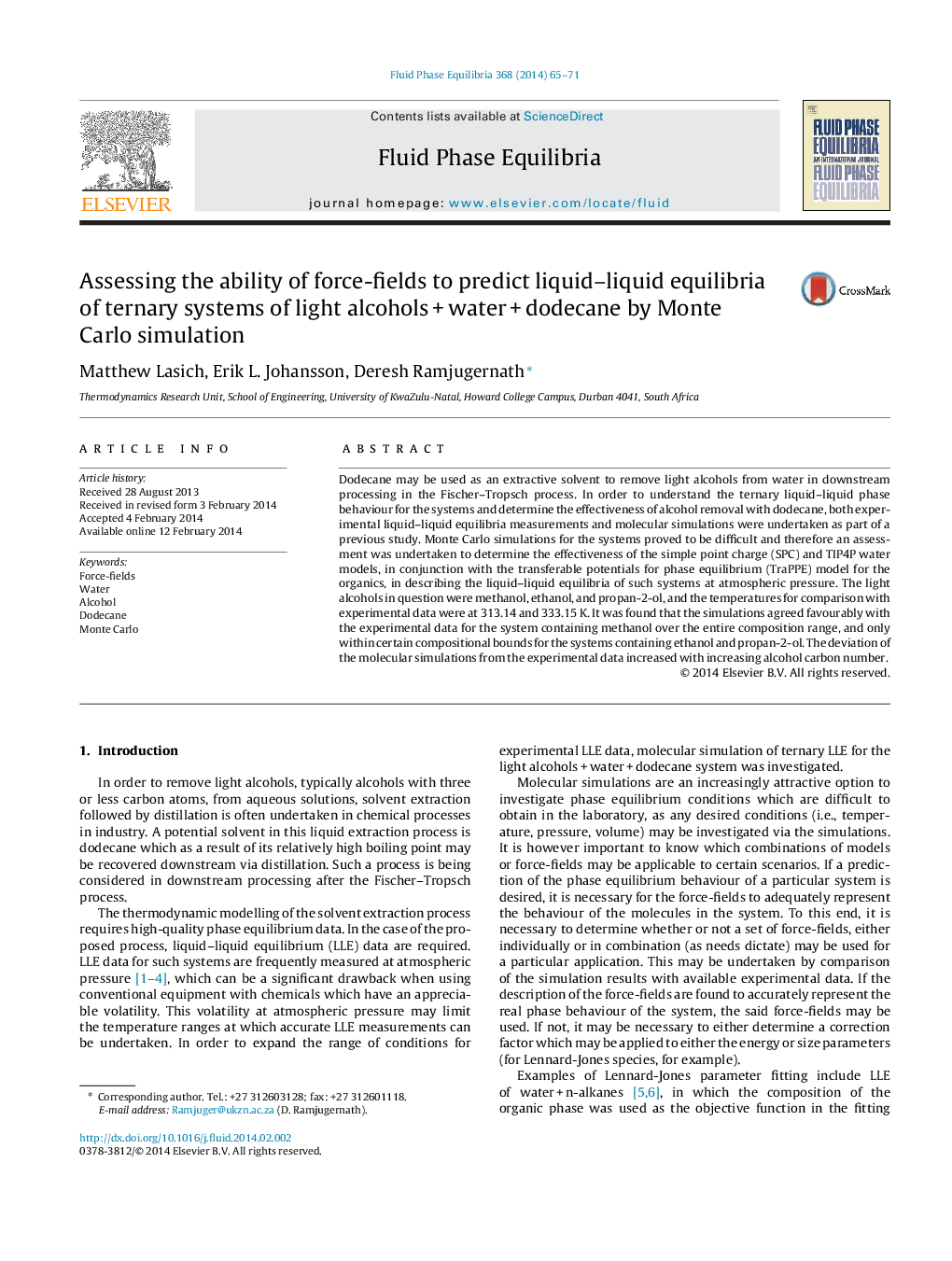| کد مقاله | کد نشریه | سال انتشار | مقاله انگلیسی | نسخه تمام متن |
|---|---|---|---|---|
| 200864 | 460522 | 2014 | 7 صفحه PDF | دانلود رایگان |

• MC simulations of ternary LLE for system of light alchohols + water + dodecane undertaken.
• SPC and TIP4P water models assessed in terms of the ability to reproduce experimental data.
• Simulations for methanol were satisfactory.
• Simulations for ethanol and propan-2-ol failed to reproduce experimental data satisfactorily.
Dodecane may be used as an extractive solvent to remove light alcohols from water in downstream processing in the Fischer–Tropsch process. In order to understand the ternary liquid–liquid phase behaviour for the systems and determine the effectiveness of alcohol removal with dodecane, both experimental liquid–liquid equilibria measurements and molecular simulations were undertaken as part of a previous study. Monte Carlo simulations for the systems proved to be difficult and therefore an assessment was undertaken to determine the effectiveness of the simple point charge (SPC) and TIP4P water models, in conjunction with the transferable potentials for phase equilibrium (TraPPE) model for the organics, in describing the liquid–liquid equilibria of such systems at atmospheric pressure. The light alcohols in question were methanol, ethanol, and propan-2-ol, and the temperatures for comparison with experimental data were at 313.14 and 333.15 K. It was found that the simulations agreed favourably with the experimental data for the system containing methanol over the entire composition range, and only within certain compositional bounds for the systems containing ethanol and propan-2-ol. The deviation of the molecular simulations from the experimental data increased with increasing alcohol carbon number.
Journal: Fluid Phase Equilibria - Volume 368, 25 April 2014, Pages 65–71